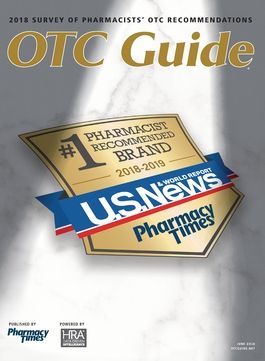Publication
Article
OTC Guide
Advocating and Educating Patients About Product Selection for Pain
Patients, pharmacists, and prescribers alike are scrambling for treatment alternatives to opioids. In 2015, the FDA issued new labeling requirements for nonsteroidal anti-inflammatory drugs (NSAIDs) to include risk for heart attack or stroke, which increases with long-term use and higher doses, and risk of heart failure.1 These pitfalls run parallel to risks for NSAID-induced intestinal bleeds that account for over 15,000 deaths per year; kidney dysfunction; and eventual requirement for dialysis.2 Acetaminophen also comes with risks and potential for drug interactions.
As professionals, we should advocate for healthy lifestyles, diet, and exercise, the latter of which may be an impossibility for someone writhing in severe pain. Below are some important reminders and considerations for various pain types:
- Topical salicylates and prescription NSAIDs can be extremely beneficial, and although the latter officially carry the same FDA NSAID warnings, the listed warnings by topical administration are unfounded.
- Several skeletal muscle relaxants and OTC antihistamines have shown benefit for skeletal muscle pain often associated with worsening back pain and other acute or chronic pain episodes. Many of these come with sedating properties and anticholinergic toxicities, but they remain an option.3
- Various OTC products for menstrual cramps and chronic gynecological pains associated with uterine cysts or endometriosis contain theobromine and other xanthines have long been shown to be beneficial for uterine wall muscle relaxation, tension headaches, and other muscle-related pains by blocking phosphodiesterase and enhancing activity of 3’,5’ cyclic AMP (cyclic adenosine monophosphate).4
- Headache pain management is very complex, and it’s important to discern whether it’s related to cluster, migraine, chronic daily, tension, or another type of headache. There are lots of prescription medications specific to these conditions, as well as botulinum injections. For most of these, referral to a neurologist will be necessary. Tension- and allergy-associated headaches could both respond well to antihistamines alone or combined with acetaminophen and/or NSAIDs.
The bottom line is that there are many considerations when counseling patients on pain management medication options, and pharmacists on the front line should advocate and educate patients that are scrambling for answers in a lonely world of pain.
Jeffrey Fudin, PharmD, DAIPM, FCCP, FASHP, FFSMB, is chief executive officer and chief medical officer of Remitigate, LLC. He is also an adjunct associate professor at Western New England University College of Pharmacy in Springfield, Massachusetts, and an adjunct associate professor of pharmacy practice and pain management at Albany College of Pharmacy and Health Sciences in New York.
References
1. FDA. Drug safety communication: FDA strengthens warning that non-aspirin nonsteroidal anti-inflammatory drugs (NSAIDs) can cause heart attacks or strokes. FDA website. fda.gov/Drugs/DrugSafety/ucm451800.htm. Updated February 26, 2016. Accessed May 15, 2018.
2. Singh G, Triadafilopoulos G. Epidemiology of NSAID induced gastrointestinal complications. J Rheumatol. 1999;56:18-24.
3. Raouf M, Fudin J. A review of skeletal muscle relaxants for pain management. Pract Pain Manag. 2016;16(5):42-60, 72. practicalpainmanagement.com/treatments/pharmacological/non-opioids/review-skeletal-muscle-relaxants-pain-management. Published April 11, 2017. Accessed May 15, 2018.
4. Huddart H, Bayton E, Shanklin J. Influence of some common methylxanthines on contractile responses and calcium mobilization of ileal, vas deferens and bladder smooth muscle. J ExpBiol. 1983;107(1):73-93.






